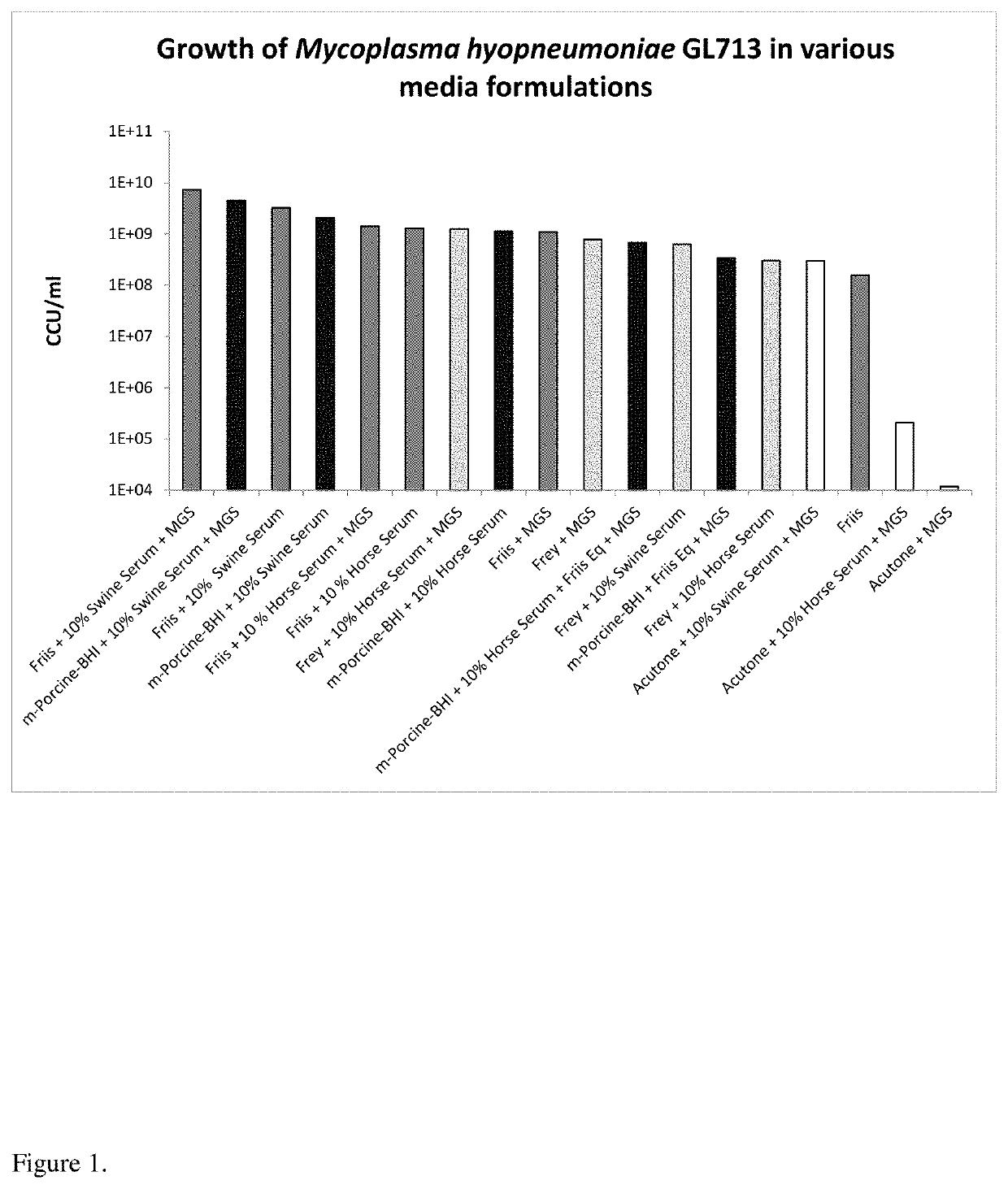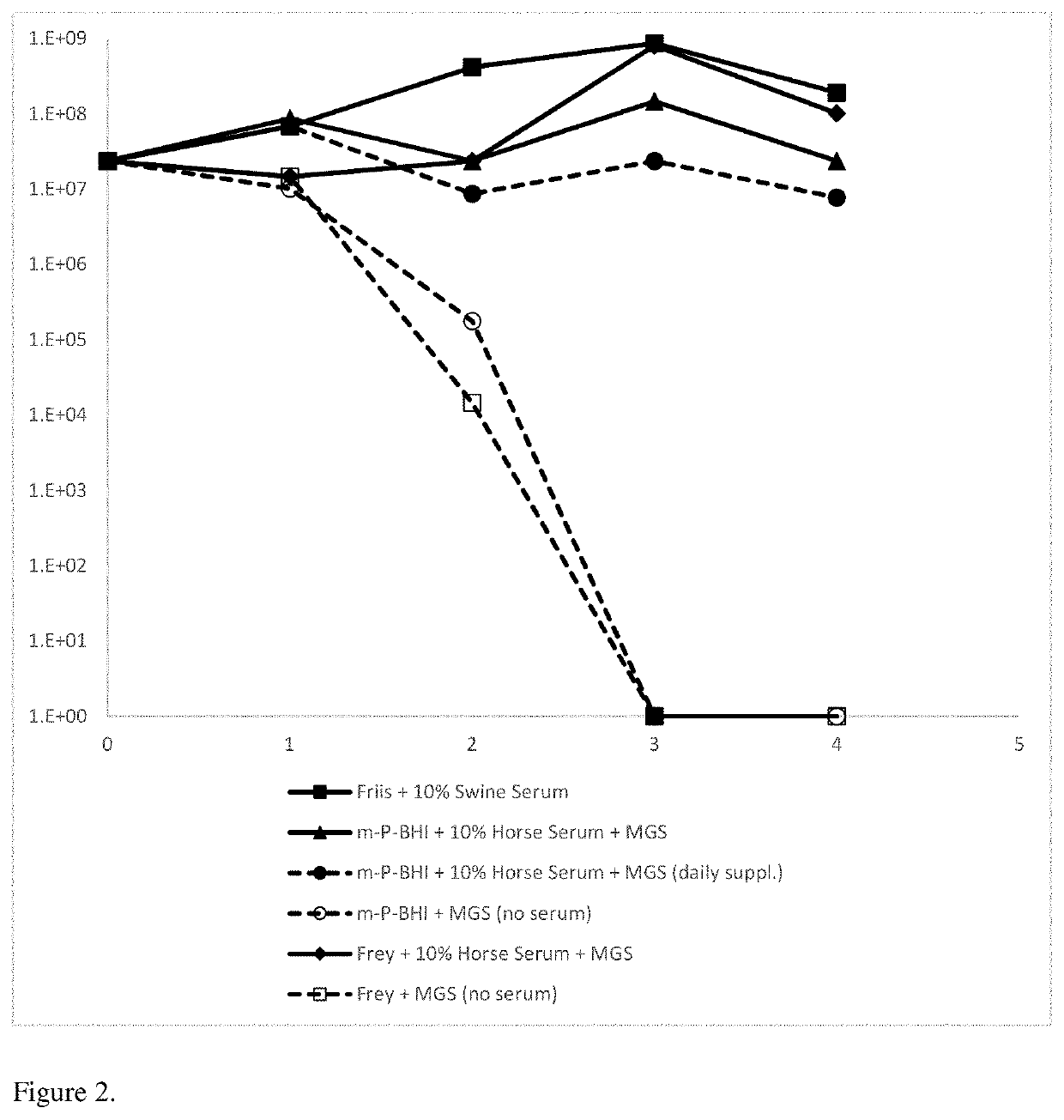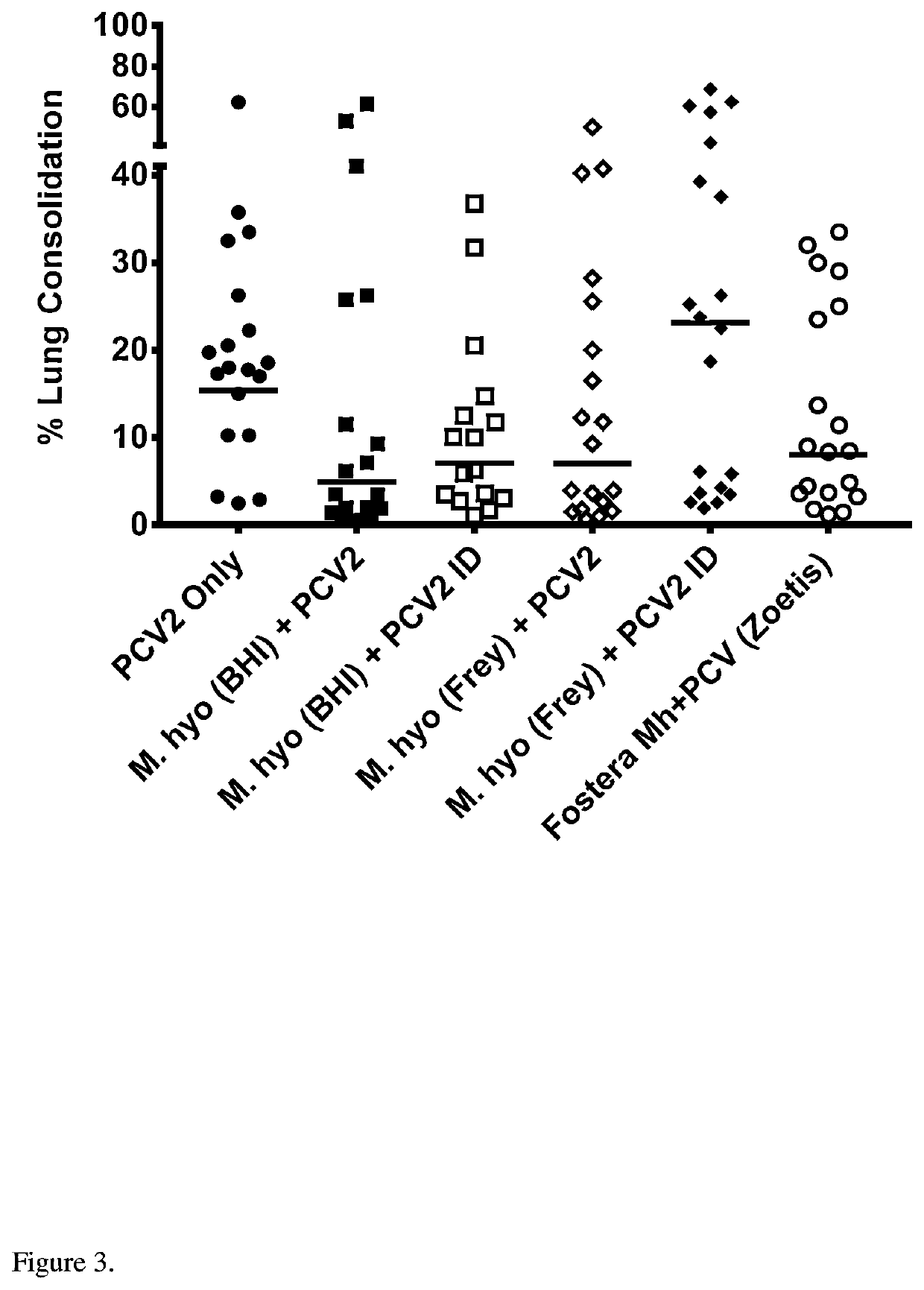Mycoplasma media formulations
a technology of mycoplasma and media, applied in the field of media formulations, can solve the problems of laborious and costly, difficult to culture mycoplasma, and inability to achieve optimal immunogenicity of mycoplasma, and achieve the effect of preventing, reducing, or ameliorating diseases
- Summary
- Abstract
- Description
- Claims
- Application Information
AI Technical Summary
Benefits of technology
Problems solved by technology
Method used
Image
Examples
example 1
[0031]The objective of this study is to confirm the identity of a M. hyopneumoniae (Mhp) strain and establish working stocks for further experimentation.
[0032]A North American strain of Mhp designated GL713 (the active ingredient in PNEUMOSTAR MYCO) is used to establish working stocks. For Examples 1, 4, and 5, a 0.5 mL aliquot of an X+4 passage of GL713 is used to inoculate 25 mL Friis media (Teknova) containing 10% swine serum (HyClone cat. #SH30908.04) in a 125 mL baffled, non-vented polycarbonate flask. After 3 days at 37° C. with orbital agitation (100 rpm), 12.5 mL of the culture is used to inoculate 100 mL Friis medium containing 10% swine serum in a 500 mL flask. After 3 days, 100 mL Friis medium containing 20% glycerol with 10% swine serum is added to the culture and mixed. The mixture is aliquoted (1 mL) and frozen at −80° C. to establish X+5 working seeds. During the course of the presented studies, Mhp cultures are passed every 3-4 days to fresh Friis medium containing 1...
example 2
[0036]To prepare stocks of GL713 for use in these studies, a 1 mL aliquot of an X+1 passage of GL713 is used to inoculate 50 mL Friis media containing 10% swine serum in a 250 mL baffled, non-vented polycarbonate flask. After 4 days at 37° C. with orbital agitation (100 rpm), 15 mL fresh Friis base medium containing 20% glycerol but no swine serum is added to the culture and mixed. Aliquots of 1 mL each are frozen at −80° C. to establish X+2 pre-pre-master seeds. One aliquot is used to inoculate 3×500 mL baffled flasks each containing 100 mL of Friis containing 10% swine serum. The culture is incubated for 5 days at 37° C. with 100 rpm orbital shaking. On day 5, the 3 flasks are combined to yield a 300 mL culture. The pre-master seed at X+3 is prepared by combining the 300 mL culture with 300 mL fresh Friis base medium containing 20% glycerol (no swine serum) and storing in 1.25 mL aliquots at −80° C. The pre-master seed is tested for viability using a full-scale CCU assay and for s...
example 3
[0040]The objective of this study is to identify the key metabolic requirements of Mhp through metabolic pathway analysis. The genomic sequences of GL713 from Example 2 and of M. hyopneumoniae 232 (GenBank Accession no. AE017332) are analyzed using the following four approaches:[0041]bioinformatically, pathways are identified by comparing the Mhp genomes to Escherichia coli and Coxiella burnetii genomes;[0042]the M. hyopneumoniae GL713 and 232 genomes are manually scanned for the existing metabolic pathways;[0043]pathway information is collected from the published literature (both in silico and experimental studies); and[0044]predicted pathway information from other Mycoplasma species, particularly human Mycoplasmas, are compared to the Mhp genomic sequences.
[0045]Based on this analysis, Mhp does not appear to contain pathways for the synthesis of amino acids, although there are several amino acid and peptide transporters in the membrane. Thus, Mhp absolutely requires external sourc...
PUM
| Property | Measurement | Unit |
|---|---|---|
| Temperature | aaaaa | aaaaa |
| Fraction | aaaaa | aaaaa |
| Fraction | aaaaa | aaaaa |
Abstract
Description
Claims
Application Information
 Login to View More
Login to View More - R&D
- Intellectual Property
- Life Sciences
- Materials
- Tech Scout
- Unparalleled Data Quality
- Higher Quality Content
- 60% Fewer Hallucinations
Browse by: Latest US Patents, China's latest patents, Technical Efficacy Thesaurus, Application Domain, Technology Topic, Popular Technical Reports.
© 2025 PatSnap. All rights reserved.Legal|Privacy policy|Modern Slavery Act Transparency Statement|Sitemap|About US| Contact US: help@patsnap.com



